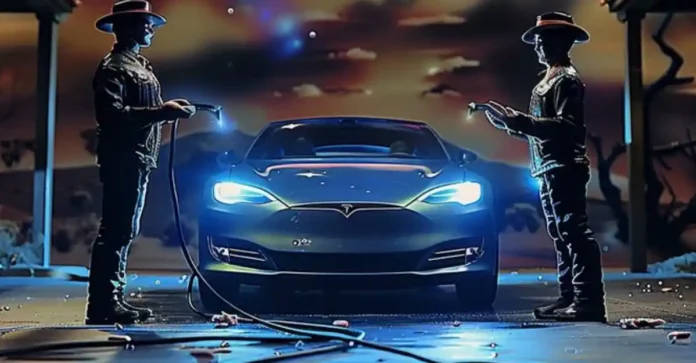In a thought-provoking tweet, Marius (@Marius_Mueller_) delves into the intriguing realm of Tesla’s robotaxi fleet and the crucial aspect of how these autonomous vehicles will be charged. Marius raises a valid point that expecting customers to manually charge the vehicles is impractical, indicating the necessity for an automated charging process to support Tesla’s ambitious venture. Twitter user Marius explores the potential solutions, including the possibility of using Tesla’s Optimus robot and the more plausible wireless charging technology.
Powering Tesla’s Robotaxi Fleet: The Wireless Charging Solution
Marius raises an interesting point about the charging challenges Tesla may face with its upcoming Cybercab robotaxi service. As he rightly notes, it’s unlikely that customers would be responsible for manually charging the vehicles after each ride. An automated charging solution is essential for the successful deployment of this autonomous transportation service.
Optimus: Too Complex for a Simple Charging Task?
Marius is skeptical about the idea of using Tesla’s Optimus humanoid robot to handle the charging process. He makes a fair assessment that this solution may be overly complex and resource-intensive for the simple task of charging a single vehicle.
Wireless Charging: A Plausible and Efficient Solution
The most promising solution, as Marius suggests, appears to be the wireless charging technology that Tesla acquired through its 2023 purchase of the German startup Wiferion. This strategic move indicates that Tesla is planning to implement a seamless and automated wireless charging system for its Cybercab fleet.The wireless charging process Marius describes is indeed a logical and efficient approach. The Cybercabs would simply need to drive to designated charging areas, park over the wireless charging pads, and the charging would commence automatically. This eliminates the need for manual intervention, aligning perfectly with the autonomous nature of the robotaxi service.
Marius’s insights highlight Tesla’s forward-thinking approach to addressing the charging challenges of its Cybercab fleet. By leveraging wireless charging technology, the company is poised to deliver a truly hassle-free and sustainable robotaxi service, setting the stage for the future of urban transportation. This automated charging solution is a testament to Tesla’s commitment to innovation and its vision for the seamless integration of electric vehicles into the mobility landscape.




